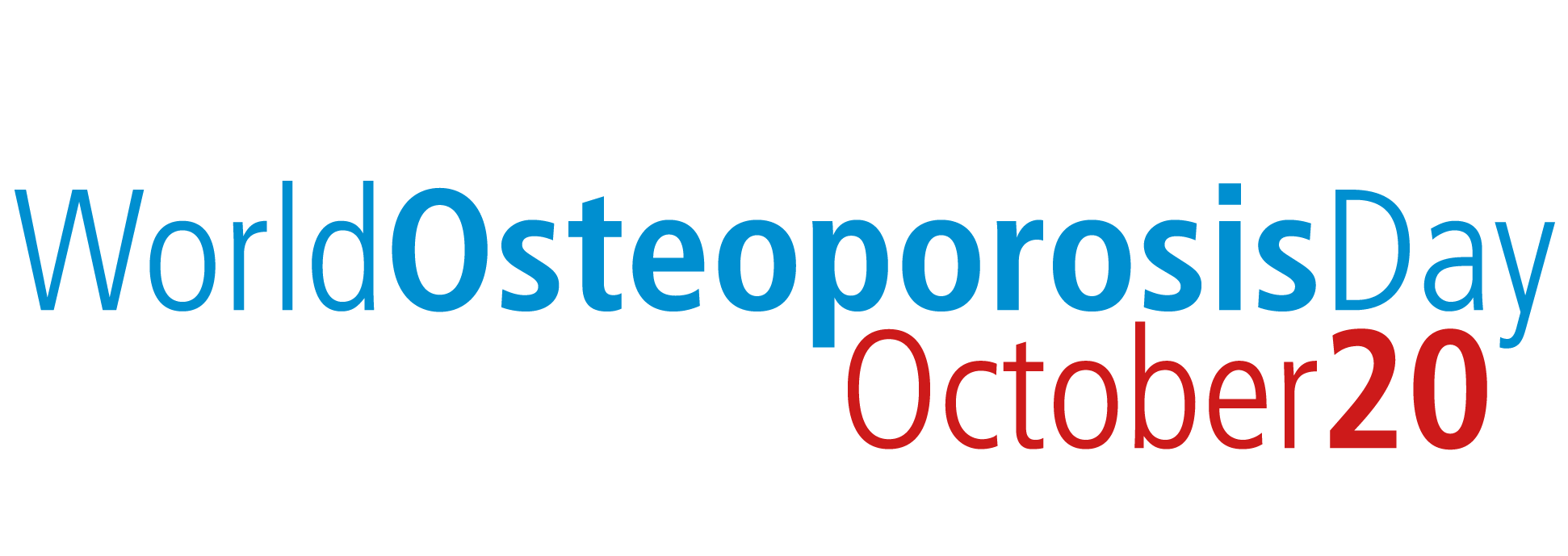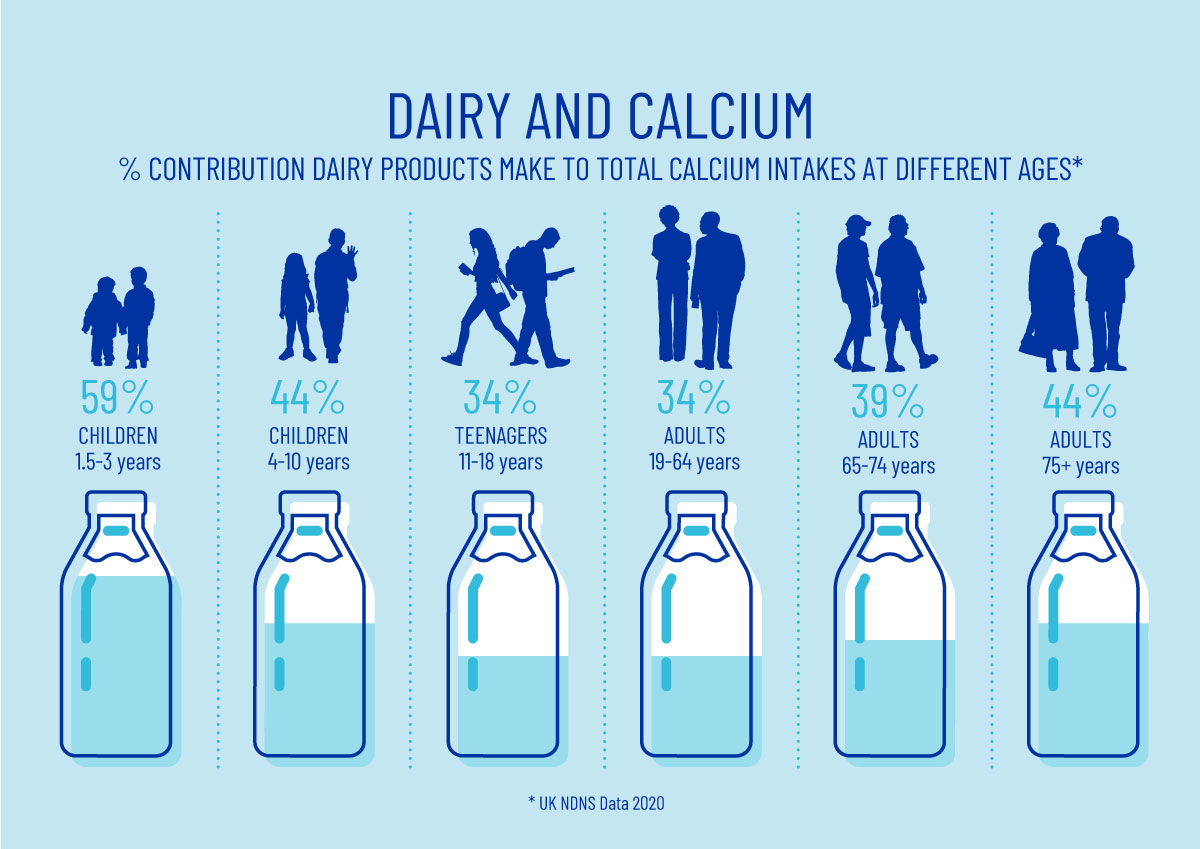
With World Osteoporosis Day 2022 on the health calendar this month, registered dietitian Juliette Kellow looks at the bone benefits of dairy products…
It’s World Osteoporosis Day on 20 October and this year’s theme – Step Up for Bone Health – focuses on the steps we can take to reduce the future risk of developing osteoporosis [1].
It’s an important message. In the UK, osteoporosis affects 3.5 million people and means bones weaken so much they’re more likely to break. According to the Royal Osteoporosis Society, half of all women and one man in five over the age of 50 will break a bone because of osteoporosis. The condition is responsible for a broken bone every single minute of the day[2]!
The good news is there are plenty of things we can do to protect our bones and keep them strong. These include exercising regularly, achieving a healthy body weight, not smoking, avoiding excessive alcohol, and being aware of personal risk factors that may affect our bones such as health problems we have, medications we take or our family history.
But at the top of the list is eating calcium rich food and a diet that’s rich in other bone-friendly nutrients, such as protein, phosphorus, zinc, magnesium and manganese, and getting enough vitamin D.
Calcium rich food infographic – The percentage dairy products make to total calcium intake for all ages
Calcium rich food is especially important for our bones.
In fact, 99% of the calcium in our body is found in the skeleton where it gives bones their strength [3]. Together with protein, phosphorus and vitamin D, calcium is needed for the growth and development of bone in children.
During childhood – and especially the teenage years – large amounts of calcium are deposited in bones making them bigger and stronger. Indeed, up to 90% of bone mass or strength is already achieved by the time girls are 18 and boys are 20 [4]. Calcium continues to accumulate in bones until they reach their peak strength in our early 30s. Then as part of normal ageing, bones start to lose calcium faster than they store it so gradually lose strength. This process speeds up in women around the menopause. Oestrogen helps keep bones strong so when levels drop during the menopause, this protective effect is lost and bones rapidly lose strength. This does slow down again post-menopause, but bone strength continues to decline in men and women by about 1% each year into our senior years [5].
This means, while it’s important to have adequate intakes of calcium throughout life, the crucial time for building strong bones happens during childhood and the teenage years. Quite simply, the more calcium deposited in bones during this time, the stronger bones will be in later life – and this can help to lower the risk of developing osteoporosis.
Despite this, it’s important to remember that some people may be genetically predisposed to conditions like osteoporosis, regardless of their diet or general health. If you have any concerns whatsoever about osteoporosis, please contact your local GP to seek advice.
Calcium from dairy video – Bioavailability and why dairy products are a good source of calcium
So how do we get enough food rich in calcium in our diet?
This is where dairy products such as milk, yogurt and cheese shine. They’re our main source of calcium in the UK, providing just over a third (34%) of the daily intake in teenagers and working age adults. In primary school children and adults over the age of 75, dairy is responsible for almost half (44%) of the calcium in diets [6].
But that’s not all. Dairy products provide two other vital nutrients for bones – protein and phosphorus. It’s this package of nutrients, sometimes called the dairy matrix, that allows our body to get the best from them. Indeed, the calcium in dairy products is more easily absorbed and used by the body than the calcium in bread, green leafy veg, nuts, seeds, beans, lentils and dried fruit. Plus, studies have shown calcium from dairy products has a greater impact on bone strength than calcium from supplements [7].
How much calcium we need depends on our stage of life. For most adults though, three servings of dairy – where one serving is 200ml milk, 30g hard cheese or a small pot of yogurt – will provide around 700mg of calcium, the amount recommended for UK adults [8]. It’s fine to choose reduced-fat products, too. Whilst they contain less fat and fewer saturates, most other nutrients – including calcium – remain the same.
For teenagers, it’s more challenging as calcium requirements increase to support rapidly growing bones. Four daily servings of dairy will get most teens close to meeting calcium needs – but many fail to achieve this. In the UK, 14% of boys and 16% of girls have very low calcium intakes so are putting their future bone health at risk [6].
For those who are low consumers, it may help to provide dairy in ways that connect with them. For fitness-loving teens this could be providing ‘power’ milkshakes. For the TikTok obsessed, it could be overnight oats, custard yogurt toast or butter boards made with low-fat cream cheese instead of butter. The more creative may like the idea of creating insta-friendly smoothie bowls using yogurt as a base or colourful nourish bowls topped with a yogurt dressing. Or it could be as easy as offering skinny lattes, gingerbread mochas or hot chocolate to teens and their friends when they get together.
Visit our page for more nutritional facts about dairy and calcium rich foods. You can also visit our recipe bank for tasty dairy inspiration.
Information sources
[1] World Osteoporosis Day. Step Up for Bone Health. https://www.worldosteoporosisday.org
[2] Royal Osteoporosis Society. Key facts and statistics. https://theros.org.uk/what-we-do/media-centre/media-toolkit/
[3] Royal Osteoporosis Society. Calcium. https://theros.org.uk/information-and-support/bone-health/nutrition-for-bones/calcium/
[4] British Nutrition Foundation. Osteoporosis. https://www.nutrition.org.uk/health-conditions/bone-and-joint-health/osteoporosis/
[5] Wilsgaard, T et al (2009) Lifestyle Impact on Lifetime Bone Loss in Women and Men: The Tromsø Study. Am. J. Epidemiol. 169 (7), 877-886. doi.org/10.1093/aje/kwn407
[6] PHE/FSA (2020) National Diet and Nutrition Survey: Rolling Programme Years 9 to 11 (2016/2017 to 2018/2019). https://www.gov.uk/government/statistics/ndns-results-from-years-9-to-11-2016-to-2017-and-2018-to-2019/ndns-results-from-years-9-to-11-combined-statistical-summary
[7] Napoli, N et al (2007) Effects of dietary calcium compared with calcium supplements on estrogen metabolism and bone mineral density. American Journal of Clinical Nutrition 85 (5); 1428-1433. doi: 10.1093/ajcn/85.5.1428
[8] Department of Health (1991) Report on Health and Social Subjects 41. Dietary Reference Values for Food Energy and Nutrients for the United Kingdom.



